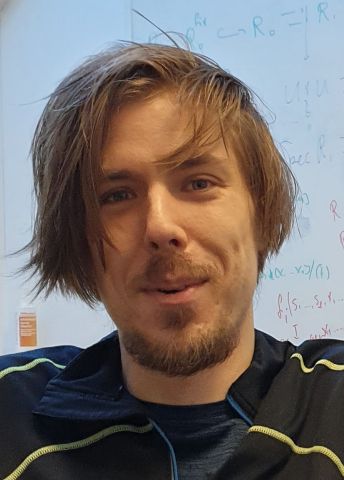
Program for mathematics 2022
Grant to a post-doctoral position abroad
Jeroen Hekking
KTH Royal Institute of Technology
Postdoc at the University of Regensburg, Germany
Grant to a post-doctoral position abroad
Jeroen Hekking
KTH Royal Institute of Technology
Postdoc at the University of Regensburg, Germany
To get past a stopping point
Jeroen Hekking will receive his doctoral degree in mathematics from KTH Royal Institute of Technology in 2022. Thanks to a grant from the Knut and Alice Wallenberg Foundation, he will hold a postdoctoral position with Professor Denis-Charles Cisinski at the University of Regensburg, Germany.
Algebraic geometry, which is the research area dealt with here, is a branch of mathematics in which algebraic equations are studied using geometry. Instead of calculating solutions to the equations, their geometric equivalents are explored. These are called varieties, such as curves, surfaces or geometric shapes in several dimensions.
One difficulty with finding solutions to the equations is that they may contain singularities, points for which calculations cannot be made. The difficulty in understanding how the equation behaves around singularities is one reason for studying it geometrically.
A singularity could be a point where the curve suddenly turns, or where the curve crosses itself. For example, someone’s signature is often full of singularities. Perhaps the best-known singularity is the point deepest inside a black hole, where the laws of physics cease to apply. The purpose of this project is to expand modern methods in algebraic geometry, which may lead to the singularities being resolved.
The biggest breakthrough in studies of singularities came in 1964 and was made by the Japanese-American mathematician Heisuke Hironaka. He proved that it is always possible to link certain varieties that contain singularities with ones that do not have them, and which are thus easier to investigate. In 1970, he was rewarded for his original work with the Fields Medal, often called the Nobel Prize of mathematics. However, there is still a lack of a general answer that applies to all singular varieties. Finding new ways of solving this problem is one aim of Hekking’s research.